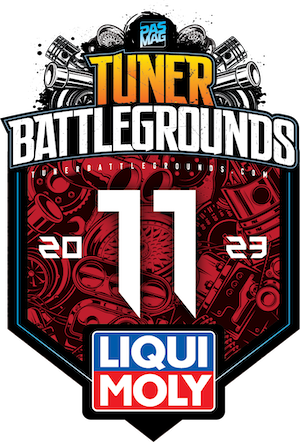The HorsepowerFreaks are a unique group of speed junkies that have ventured into a market space where the distinction between daily driven 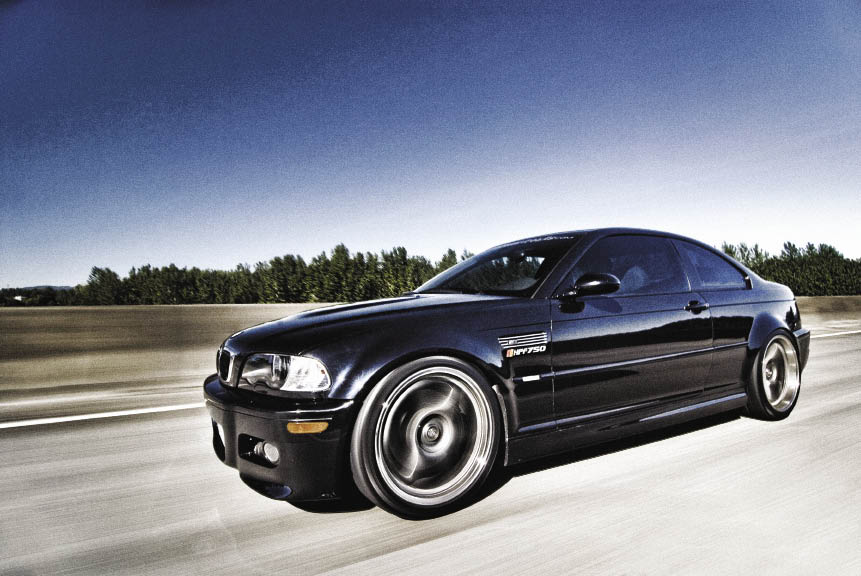 Bimmers and race cars are completely blurred. These are “daily driven” luxury appointed M3s, several of which are now making in excess of 1,000hp with minimal turbo lag, zero clutch pedal effort, and silky smooth engine operation. They’re defying the preconceived notions that high horsepower cars have to get bad gas mileage, are difficult to drive, obnoxiously loud, and are only driven on race gas. In fact, this article is about their stage 3 turbo systems which recently made 993hp (815whp) on 91 Octane Pump Gas with some auxiliary methanol injection all on an easy to drive, M3 loaded with SMG (paddle shifters), navigation and all the bells and whistles you could ever want.
Bimmers and race cars are completely blurred. These are “daily driven” luxury appointed M3s, several of which are now making in excess of 1,000hp with minimal turbo lag, zero clutch pedal effort, and silky smooth engine operation. They’re defying the preconceived notions that high horsepower cars have to get bad gas mileage, are difficult to drive, obnoxiously loud, and are only driven on race gas. In fact, this article is about their stage 3 turbo systems which recently made 993hp (815whp) on 91 Octane Pump Gas with some auxiliary methanol injection all on an easy to drive, M3 loaded with SMG (paddle shifters), navigation and all the bells and whistles you could ever want.
When asked about the design requirements for their stage 3 turbo systems, Mr. Chris Bergemann said, “I had several priorities for our most recent stage 3 turbo systems. First, there can be no change in drive-ability from the factory feel. Grandmothers must be able to drive these cars! Second, there should be no more turbo lag with stage 3 than our stage 1 & 2 kits, which already make more power at every rpm than stock – even off idle. And third, it must make “BIG, BIG, BIG” power on 91 octane pump gas! We’re stepping into a new arena with this product, and changing how people feel about modifying their cars. There is nothing for the customer to tune, nothing for them to adjust, nothing for them to worry about. They just fill up with pump gas at their local gas station, change their oil regularly as scheduled, and go out and beat on street bikes.”
To create excessive horsepower reliably, HorsepowerFreaks modified the internals of the S54 engine. They dropped the compression ratio from 11.5:1 to 9.5:1 by using lower compression pistons. The tops of these pistons were ceramic coated to prevent hot spots which can lead to pre-ignition, while the sides of the pistons were protected with special skirt coatings. To handle the extreme stresses, the wrist pins were extended and made significantly thicker to keep the pistons securely in place.
 |
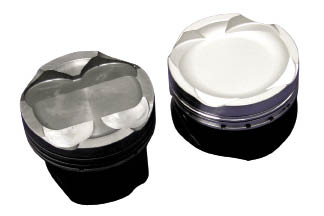 |
To deal with these larger wrist pins and to ensure smooth operation, the pistons were modified to include four oil passages directed to the wrist pins. The pistons were also modified to include eight oil ports for the oil rings instead of two that come with the factory pistons. They chose pistons with thermal expansion properties that don’t require them to be set up loose. This along with the skirt coatings allows their stage three engines to start up cold without any piston noise often associated with built engines.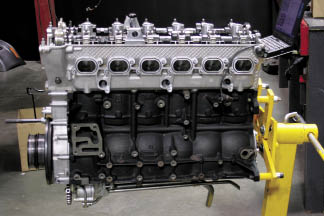
To keep the pistons securely attached, they chose a reputable manufacturer to build an I-beam rod that allowed them to lean on the engine past the 1,000rwhp mark. These S54 rods are not only stronger than the factory rods, they are also lighter weighing in at 1lb- 4.6oz instead of the factory rods which weigh 1lb-6.1oz.
HorsepowerFreaks chose to stick with the factory S54 bearings as they’ve found no problem with the new bearings BMW has supplied since the ‘01-‘02 bearing recall. To hold everything tightly in place, ARP was an ideal choice. ARP main studs were selected to hold the crankshaft tightly in place while 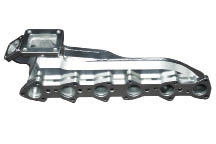 the ARP head studs were chosen to keep the head from lifting under high boost. The rest of the block was kept factory including the head, cams, valves, and no porting was employed.
the ARP head studs were chosen to keep the head from lifting under high boost. The rest of the block was kept factory including the head, cams, valves, and no porting was employed.
We asked Mr. Bergemann, “How are you able to make so much power, almost 1000hp at a relatively low boost level like 22psi?” His response was “There are several reasons, many due to the fact that the S54 engine was designed by BMW without a turbocharger. The original engine had to rely on technology to bring more air into the engine, and expel it efficiently without requiring forced induction. The S54 head flows incredibly well… so well that it flows nearly 30-percent more than a factory 2JZ-GTE Supra head. To bring down intake air temps allowing more fuel to be injected at the same boost level, we designed an extremely efficient bar-n-plate intercooler that chills the mixture down considerably.
Our turbo systems also take advantage of a separate methanol system that we designed. When methanol is used, we’ve seen intake air temps as low as 40°F (4°C) at the end of our pulls. We selected a Precision 74GTS dual ball-bearing turbo that is extremely efficient at the power level that we’re running, and full boost is achieved at a mere 4,800rpm.
And lastly, we control the Double VANOS, which allows us to put both the intake and exhaust cam at +/- 40 degrees of timing at any rpm and any level of boost on an x-y plane in our EMS. This is like having a VTEC system that comes on at every rpm!“
After looking at the S54 engine, you’ll immediately realize there isn’t much room for a turbo, especially if you still want to have air conditioning. 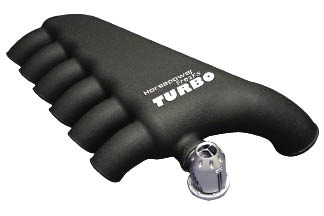 HorsepowerFreaks took the unique approach and teamed up with Steed Speed to design a turbo manifold that was CNC machined out of very thick cold rolled steel. The advantages to this approach were numerous. For starters, they designed all six runners to flow individually from the head to the turbo collector area while decreasing the overall dimensions of the manifold to fit well within the limited space available. They also directed every runner towards the wastegate port allowing precise boost control with multiple boost settings. To maintain perfectly flat boost levels they chose one of the best, the TiAL 44mm V-band, that simply connects to the end of the turbo manifold. To keep under-hood temperatures down and eliminate rusting they ceramic coated each manifold inside and out. Carving runners out of large chunks of steel has proven to resist warping and cracking and has allowed them to keep very tight manifold to manifold tolerances. And finally, to make installation easy, they designed the manifold in two sections, one that bolts up directly to the head leaving plenty of room to work, while the main section bolts up to the head flange with five easy to access allen bolts.
HorsepowerFreaks took the unique approach and teamed up with Steed Speed to design a turbo manifold that was CNC machined out of very thick cold rolled steel. The advantages to this approach were numerous. For starters, they designed all six runners to flow individually from the head to the turbo collector area while decreasing the overall dimensions of the manifold to fit well within the limited space available. They also directed every runner towards the wastegate port allowing precise boost control with multiple boost settings. To maintain perfectly flat boost levels they chose one of the best, the TiAL 44mm V-band, that simply connects to the end of the turbo manifold. To keep under-hood temperatures down and eliminate rusting they ceramic coated each manifold inside and out. Carving runners out of large chunks of steel has proven to resist warping and cracking and has allowed them to keep very tight manifold to manifold tolerances. And finally, to make installation easy, they designed the manifold in two sections, one that bolts up directly to the head leaving plenty of room to work, while the main section bolts up to the head flange with five easy to access allen bolts.
In order to make this much power an engine requires a very unrestrictive exhaust to keep backpressure to a minimum. To vacate spent exhaust energy with their stage 3 turbo system, HorsepowerFreaks chosen to run a massive 4-inch exhaust complete with a high flowing Aero Turbine muffler and quad tips made out of Titanium.
To keep all of the intercooler piping connected at high boost, HorsepowerFreaks chose to work with Venair and designed their own IC couplers. Many 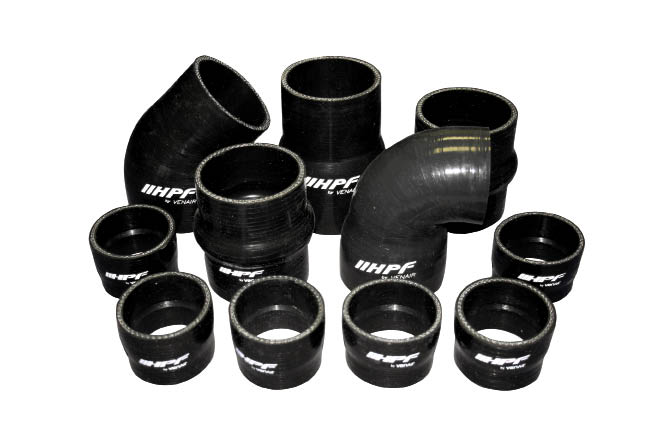 couplers commonly used on turbo kits come in the 2-ply and 3-ply variety. HorsepowerFreaks went all the way to 5-ply to ensure the T-bolt clamps have plenty of material to sink into. This extra shielding not only resists ballooning, but protects the intake system from leaks and reduces the likelihood of an intercooler coupler coming free under high boost.
couplers commonly used on turbo kits come in the 2-ply and 3-ply variety. HorsepowerFreaks went all the way to 5-ply to ensure the T-bolt clamps have plenty of material to sink into. This extra shielding not only resists ballooning, but protects the intake system from leaks and reduces the likelihood of an intercooler coupler coming free under high boost.
One of the beauties of the S54 engine is that it comes with six individual throttle bodies. When these individual throttle bodies are closed in between shifts, there is a significant volume of pressurized air inside the intake manifold, intercooler and the IC piping that must be vacated. HorsepowerFreaks chose to run twin HKS Super Sequential blow-off valves to meet the challenge. They mounted one on the intake manifold just before the throttle bodies, and one on the intercooler piping in front of the turbo. These “dual valve” blow-off valves allow pressure to be released from very light manifold vacuum draws arising from off-idle situations all the way to high manifold vacuum draws when the throttle plates are closed at full boost.
We asked Chris, “What features have you incorporated into your turbo systems that set your kits apart from comparable kits on other vehicles.” He commented.. “I’ve been drag racing for the past 23 years in all different types of vehicles. One thing that always annoyed me was the effort required to 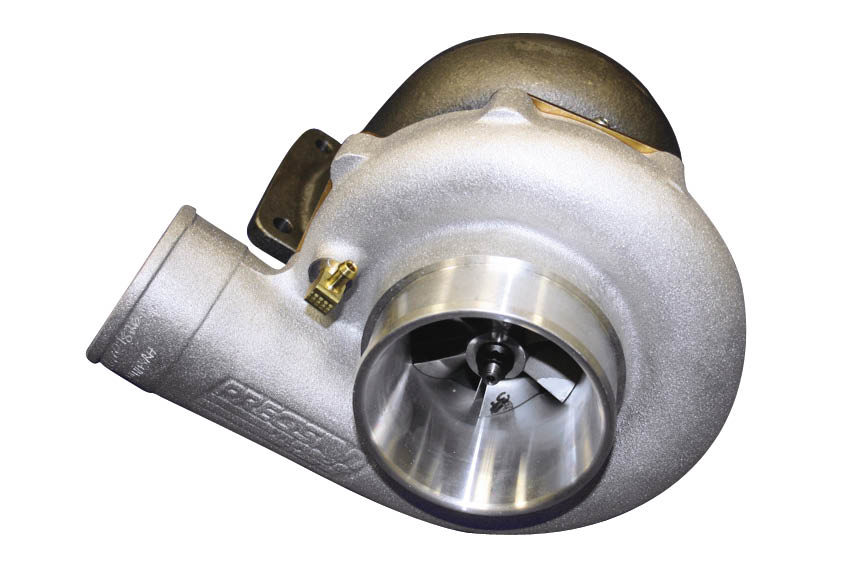 retune a car for race fuel on track day. This was significant in every car I raced. With the older muscle cars, it required re-jetting the carburetors and advancing the timing using a timing light, while in the past decade, it required bringing a laptop to the track and reloading a new map into the EMS after the race fuel was added. On this project, I asked my engineers, I want a switch on the steering column that I can flip when I want to run race fuel. Not only do I want it to change the fuel and timing requirements, but make it target high boost on the race fuel mode. And let’s design this into our system so our customers can do it as well. I want everyone to have a plug-n-play race fuel switch. “
retune a car for race fuel on track day. This was significant in every car I raced. With the older muscle cars, it required re-jetting the carburetors and advancing the timing using a timing light, while in the past decade, it required bringing a laptop to the track and reloading a new map into the EMS after the race fuel was added. On this project, I asked my engineers, I want a switch on the steering column that I can flip when I want to run race fuel. Not only do I want it to change the fuel and timing requirements, but make it target high boost on the race fuel mode. And let’s design this into our system so our customers can do it as well. I want everyone to have a plug-n-play race fuel switch. “
“Once they accomplished that, I told them about my 1,000rwhp Supra that has a red LED that lights up my dash red anytime there’s any pre-ignition, the precursor to detonation. This gives me an opportunity to lift in case I get bad gas (which has happened), or some other problem occurs. I said, can we add that to this kit so our customers will know if the gas they’re using has sufficient octane to prevent pre-ignition. So our engineers built a knock siren into the back of the boost 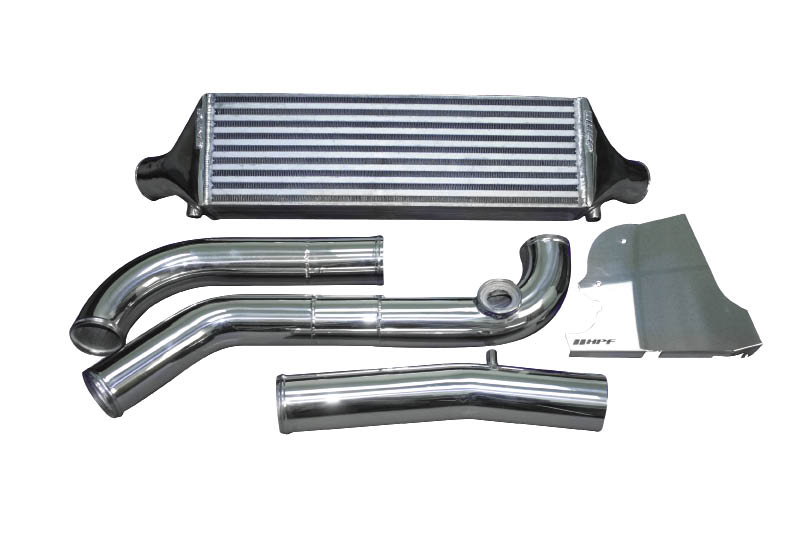 gauge that comes with all of our Stage 1, 2 and 3 kits. This knock siren goes off anytime pre-ignition occurs while the EMS injects extra fuel and pulls out timing to protect the motor.”
gauge that comes with all of our Stage 1, 2 and 3 kits. This knock siren goes off anytime pre-ignition occurs while the EMS injects extra fuel and pulls out timing to protect the motor.”
“I think our last major accomplishment that truly sets our systems apart is their plug-n-play methanol integration. I came to our engineers and said, our customers need to be able to run methanol to enhance the pump gas and race fuel capabilities of our kits. For stage 1 it was extremely important as the compression ratio of the factory S54 engine was left untouched at 11.5:1 and methanol has a motor octane of roughly 110. This would allow our stage 1 customers to make significantly more power on 91 octane pump gas. I also asked them for override protection in case the methanol tank runs dry or a piece of dirt clogs the feed line. They responded with a plug-n-play 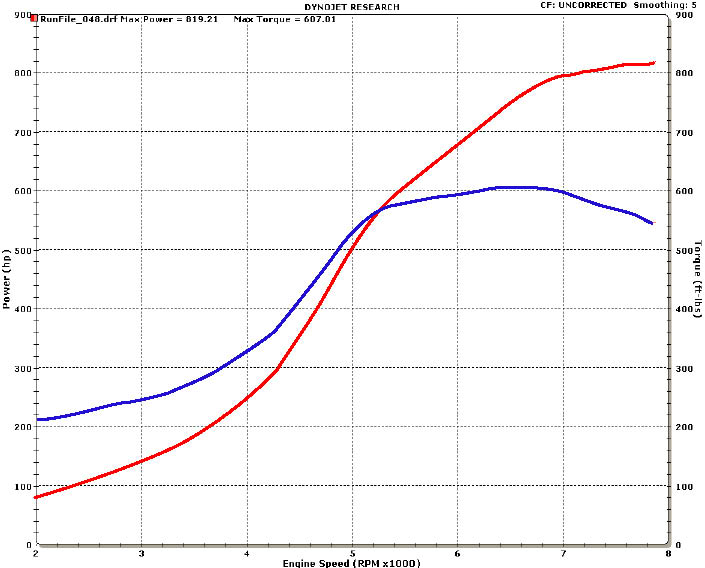 methanol system (our stage 2) that automatically injected methanol when it was needed. Once the methanol was flowing and the line pressure was within a specified window, the EMS targeted high boost, fuel from the injectors was decreased to compensate for the auxiliary methanol and timing was advanced to take advantage of the higher octane. This methanol system on our stage 3 kit increased power from 762hp to 993hp (815rwhp) on 91 octane pump gas!
methanol system (our stage 2) that automatically injected methanol when it was needed. Once the methanol was flowing and the line pressure was within a specified window, the EMS targeted high boost, fuel from the injectors was decreased to compensate for the auxiliary methanol and timing was advanced to take advantage of the higher octane. This methanol system on our stage 3 kit increased power from 762hp to 993hp (815rwhp) on 91 octane pump gas!
They also delivered on their engine protection promise as the system has worked flawlessly for our customers when they have accidentally let their methanol tanks run dry and the system reverted back to the low boost setting. For added safety, they also designed the 1.25 gallon methanol tank to fit snugly inside the engine compartment in front of the firewall rather than locating it inside the cabin.”
PAS is definitely excited about what HPF is doing over in Portland, OR. We’ve seen a lot of video footage of these beasts on the road, and have also had the luxury of riding in one of their cars first hand. They are truly scary. We’re definitely going to be hearing more about these wonderful machines in the near future and are looking forward to the HorsepowerFreaks/Asuka widebody debut for the M3 which will roll on massive 345mm tires in the rear.
For more information visit www.horsepowerfreaks.com
Related Articles
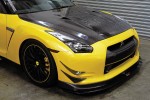 PASSWORD: JDM - Dry Carbon GT-R Parts
PASSWORD: JDM - Dry Carbon GT-R Parts
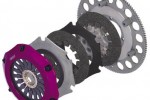 Project R32: Proper Exedy Racing Clutch Selection
Project R32: Proper Exedy Racing Clutch Selection
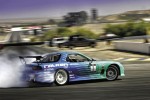 Getting Hyphy: Calvin Wan's 1993 Mazda RX-7
Getting Hyphy: Calvin Wan's 1993 Mazda RX-7
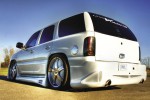 BIG BALLIN'
BIG BALLIN'
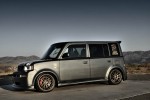 Rugrat: Sean Driscoll's 2004 Scion xB
Rugrat: Sean Driscoll's 2004 Scion xB
 Project R32: Adjustable Suspension Links
Project R32: Adjustable Suspension Links


